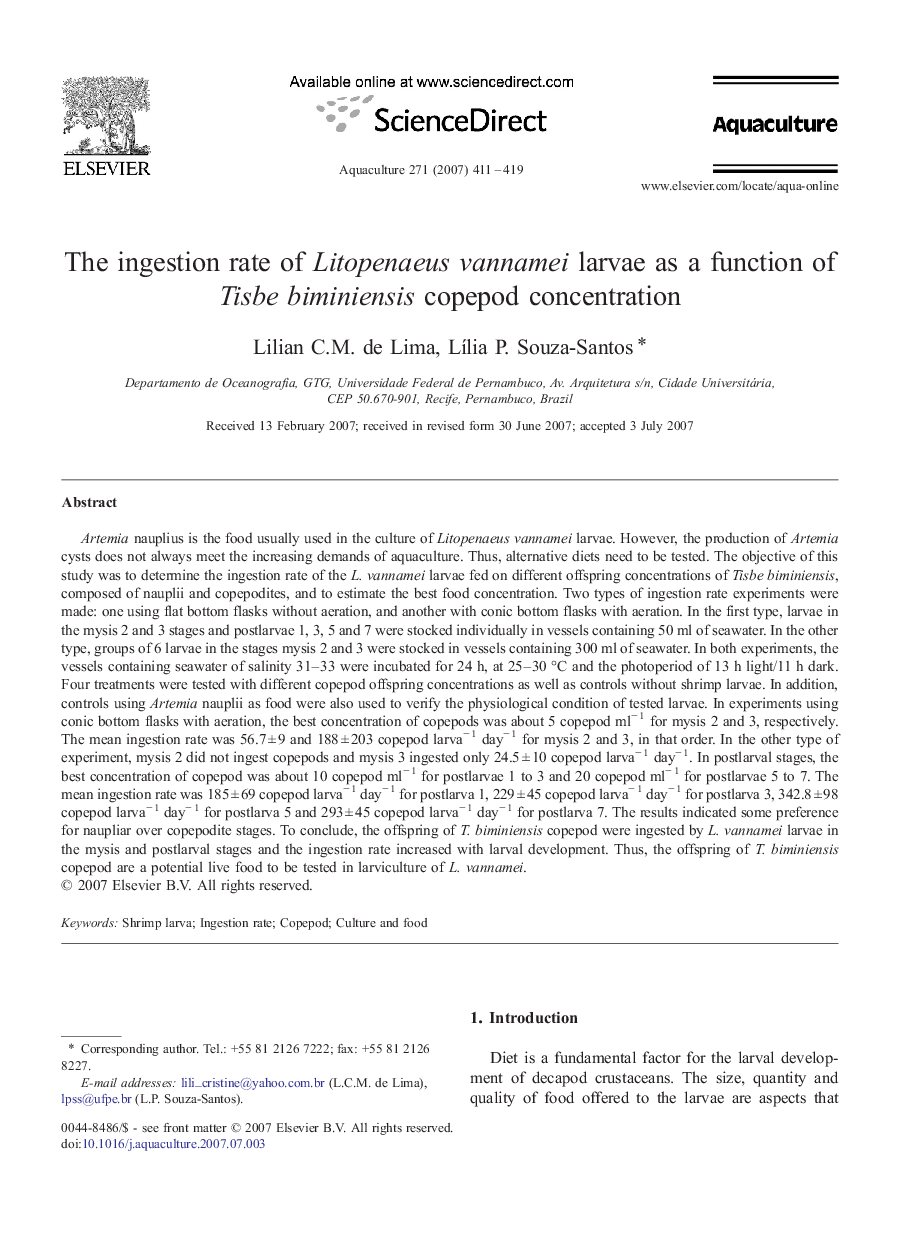| کد مقاله | کد نشریه | سال انتشار | مقاله انگلیسی | نسخه تمام متن |
|---|---|---|---|---|
| 2425165 | 1552971 | 2007 | 9 صفحه PDF | دانلود رایگان |

Artemia nauplius is the food usually used in the culture of Litopenaeus vannamei larvae. However, the production of Artemia cysts does not always meet the increasing demands of aquaculture. Thus, alternative diets need to be tested. The objective of this study was to determine the ingestion rate of the L. vannamei larvae fed on different offspring concentrations of Tisbe biminiensis, composed of nauplii and copepodites, and to estimate the best food concentration. Two types of ingestion rate experiments were made: one using flat bottom flasks without aeration, and another with conic bottom flasks with aeration. In the first type, larvae in the mysis 2 and 3 stages and postlarvae 1, 3, 5 and 7 were stocked individually in vessels containing 50 ml of seawater. In the other type, groups of 6 larvae in the stages mysis 2 and 3 were stocked in vessels containing 300 ml of seawater. In both experiments, the vessels containing seawater of salinity 31–33 were incubated for 24 h, at 25–30 °C and the photoperiod of 13 h light/11 h dark. Four treatments were tested with different copepod offspring concentrations as well as controls without shrimp larvae. In addition, controls using Artemia nauplii as food were also used to verify the physiological condition of tested larvae. In experiments using conic bottom flasks with aeration, the best concentration of copepods was about 5 copepod ml− 1 for mysis 2 and 3, respectively. The mean ingestion rate was 56.7 ± 9 and 188 ± 203 copepod larva− 1 day− 1 for mysis 2 and 3, in that order. In the other type of experiment, mysis 2 did not ingest copepods and mysis 3 ingested only 24.5 ± 10 copepod larva− 1 day− 1. In postlarval stages, the best concentration of copepod was about 10 copepod ml− 1 for postlarvae 1 to 3 and 20 copepod ml− 1 for postlarvae 5 to 7. The mean ingestion rate was 185 ± 69 copepod larva− 1 day− 1 for postlarva 1, 229 ± 45 copepod larva− 1 day− 1 for postlarva 3, 342.8 ± 98 copepod larva− 1 day− 1 for postlarva 5 and 293 ± 45 copepod larva− 1 day− 1 for postlarva 7. The results indicated some preference for naupliar over copepodite stages. To conclude, the offspring of T. biminiensis copepod were ingested by L. vannamei larvae in the mysis and postlarval stages and the ingestion rate increased with larval development. Thus, the offspring of T. biminiensis copepod are a potential live food to be tested in larviculture of L. vannamei.
Journal: Aquaculture - Volume 271, Issues 1–4, 3 October 2007, Pages 411–419